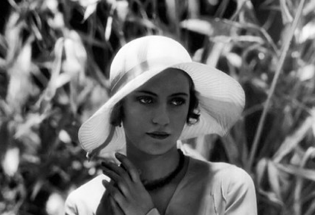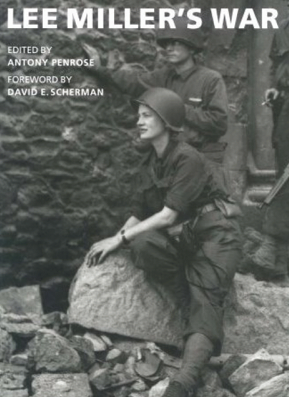For a long time, Lee Miller lived in history as the love and muse of Man Ray. The American artist helped shape her into the Dada-era darling we remember today – who could forget those lips? In recent years, however, the public has become more aware of the breadth and tenacity of Lee Miller’s own work. The model-muse was not only an experimental artist in her own right, but a daring combat photo-journalist and war correspondent for Vogue. In both the peak and aftermath of World War II, Miller ventured to places few journalists – let alone female journalists – were expected to go. She defied US Embassy orders to leave Europe once WWII broke out, choosing to stay and follow American troops to the frontlines of the war at the siege of St. Malo, the Liberation of Paris, the fighting at Luxembourg and Alsace, as well as endless episodes of Blitzkrieg over London. Today, her images remain as some of the most pointed, haunting images of death in WWII.
“In both the peak and aftermath of World War II, Miller ventured to places few journalists – let alone female journalists – were expected to go”
Miller first moved to Paris in 1929, where she met Man Ray. She had worked as a model and fashion photographer for many years, but Miller started integrating more surreal elements of design and composition into her work as her inspiring (albeit tumultuous) relationship with Man Ray developed. Though they would never marry, the two remained lovers and friends their entire lives.
In 1932, Miller returned to America. But her stay became short-lived when she fell for Egyptian businessman Aziz Eloui Bey – then it was off to Cairo, Egypt. In 1937 she met her second husband, Roland Penrose, while visiting Paris. Then, the war erupted. As a correspondent accredited to the US army, she delved into incomprehensible scenes of death and violence; images that must have seemed more surreal than any painting or sculpture penned to the Surrealist or Dada movements themselves. “Penetrating deep into Eastern Europe,” states Miller’s archival site, “ [the photo-journalist] covered harrowing scenes of children dying in Vienna, peasant life in post-war Hungary and the execution of Prime Minister Lazlo Bardossy.” Chronicling the war was the task of Miller’s ever-growing portfolio – and death became its inevitable, central theme.
“Chronicling the war was the task of Miller’s ever-growing portfolio – and death became its inevitable, central theme.”
Perhaps it was Miller’s already existing eye for surrealism, but her images say something unique about the role of death as such a surreal, but nonetheless pervasive, reality of WWII. She had a knack for exploring the limits of our imagination and understanding of the absurd, especially the inherent absurdity of death; it was a skill that spoke directly to her ability to find, face and document the unthinkable.
One of her most famous images is that of a lifeless SS guard, floating down a canal in Dachau, Germany (you can view the image here, but a word of caution as it’s a bit jarring). The year is 1945. Light plays off the water above him, blanketing him a softness; a sense of tranquility. His eyes are closed, his face turned to the side as resting on an invisible pillow. If it weren’t for his jacket, it would be easy to forget why the SS guard lies in the canal. Calm bears an uncanny resemblance to death in the photograph – something Miller felt the world needed to see. “I usually don’t take pictures of horrors,” she wrote to her editor, “But don’t think that every town isn’t rich with them. I hope Vogue will feel they can publish these pictures.”
Related Articles:
- Lee Miller — Victoria and Albert Museum
- “Die” (1962) by Minimalist Tony Smith
- “Camille on Her Death Bed” by Impressionst Claude Monet, 187

 A Woman’s War: The WWII Photography of Lee Miller
A Woman’s War: The WWII Photography of Lee Miller




 Funeral Home Owner Chris Johnson Spending Halloween in Jail
Funeral Home Owner Chris Johnson Spending Halloween in Jail
 Our Monthly Tip: Toast a Loved One with a Personalized Glass
Our Monthly Tip: Toast a Loved One with a Personalized Glass
 My Cousin’s Death Taught Me the Meaning of Life
My Cousin’s Death Taught Me the Meaning of Life














